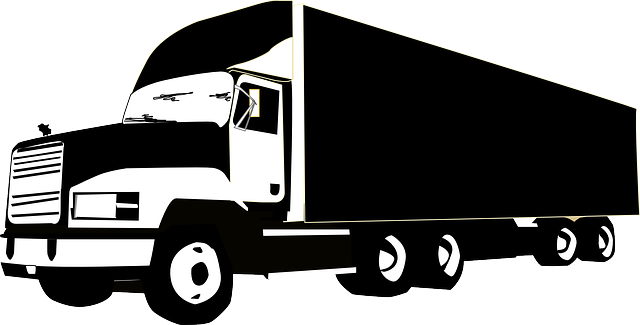If you own a truck, tractor, or trailer, you'll probably have heard of something called a DOT retroreflective sheeting re-reflective tape. However, many people still don't know what it is and why it was invented. More importantly, what requirements do you need to meet for your own either retroreflective sheeting tape to follow the latest regulations? Keep on reading to discover the answer to all these questions and more.

What Is DOT C2 Reflective Tape?
According to government law, the name DOT tape or C2 reflective tape is a special, truck reflective tape that must be applied to all US trucks and trailers. If you're unfamiliar with what the name DOT tape or C2 term indicates, the DOT stands for the Department of Transportation, while C2 signifies that the two dot reflective tape is 2 inches in width.
Moreover, the usage of this tape has been put into effect since 1992 by the National Highway Traffic Safety Administration (NHTSA).
And its ruling was that all trailers manufactured after 1993, exceeding 80 inches in width or 10000 pounds in gross vehicle weight rating, are obligated to put reflex reflectors of reflective tape on pole trailers. That measure should reduce motor vehicle collisions caused by low visibility. Hence, the DOT reflective tape is also commonly referred to to by trailer manufacturers as a side conspicuity tape or reflective tape.
Tip: This rule doesn't apply to trailers for living or office use.
Why Is This Tape Necessary?
The usage of reflective tape, also known as a retroreflective material or trailer reflective tape or sheeting trailer or retro reflective sheeting tape, on tractors and trailers is crucial. That's because it can prevent the numerous car accidents that annually occur when the light conditions are less than optimal.
Sadly, countless cars and other vehicles collide with trucks and trailers, as they usually have a dark color that makes them hard to see at night or in other low light conditions. This caused many unfortunate deaths and injuries annually. Therefore, some way to improve visibility was needed, and that's how the reflective tape came to be.

What Happens if the Tape Isn't Applied Adequately?
Unfortunately, many trailer, and tractor trailers, and truck drivers don't apply the conspicuity tape properly as required by the FMCSA (Federal Motor Carrier Safety Administration) or at all, consequently endangering themselves and those around them.
And the failure to comply with the required regulations could potentially lead to a level I inspection. This may, in turn, lead to the driver receiving CSA severity points and affecting their safety rating.
Trailer and Truck Tractor Requirements of the DOT C2 Reflective Tape
Quite simply, the DOT dot reflective tape requirements for trucks and trailers can be divided into two categories: appearance and application.
When it comes to its appearance, there are two types of tape; an alternating red and white retro-reflective tape and a plain white/silver one. The red and white combo reflector tape can have a pattern of 6/6 ( 6″ white and 6″ red) or 7/11 (7″ white and 11″ red), and both these and white retro reflective tape tapes are suitable for use in the United States.
Nonetheless, each tape type must have specific photometric requirements as well as an overall width of 2″. Any less, and you won't be adhering to the government standards needed for easy visibility of permanent equipment.
On the exposed surface of the same white retroreflective sheeting re-reflective sheeting, the DOT-C2 word should be stamped/printed in indelible ink. And it should appear regularly every 12 inches on the plain white retroreflective elements of reflective sheeting tape. Likewise, on reflective safety tape it must appear on all white and red color segments at least once and should have a minimum height of 3 mm.
Application-wise, the two types of the conspicuity reflective tape or tape have different uses. On the one hand, the red or white sheeting is typically used for the sides, back, and bottom of a truck/trailer. On the other hand, the white retro reflective sheeting conspicuity tape is mostly used for the two upper corners and back of the truck/trailer.
When it comes to the tape placement, it should be placed horizontally when the trailer is empty, anywhere between 15″ to 60″ above the road surface. This way, it can be readily seen.
Now, the retroreflective sheeting doesn't have to be a continuous band, but it must cover at least full width and at least half of the vehicle's total side length. It should also start at the extreme edges as far forward and backward as possible.
Moreover, the retro-reflective dot white reflective tape should be applied in an even pattern, meaning that each white or red segment dot white reflective tape should be 12, 18, or 24 inches apart from the next one.
However, keep in mind that there must be a continuous tape band at the entire bottom of the vehicle's back and a second one over the entire lower rear bar (also known as the ICC bar or the upper rear side underride protection device).
As for truck tractors, at least a two-foot strip of red and white, reflector tape should be applied to their front temporary mudflap brackets and flap brackets (or fenders in case the tractor lacks a permanent mudflap system or flap). If you have to apply the reflex reflectors tape to the rear of the cab due to the lack of fenders and mud flaps, make sure that no more than a quarter of the retro-reflective tape can be hidden by other things.
Finally, there must be two inverted Ls on each side on the two uppermost and outermost areas rear corners of the trailer. For that, you need four white strips of tape that are at least 12 inches in length. Then, place them on the left upper corners of trailer two pairs rear area outermost and uppermost corners of the trailer/truck's cab.

Conclusion
Ultimately, the DOT C2 retroreflective sheeting is an essential requirement of all large trucks, semi-trucks, tractors, and trailers. This is primarily due to its role in preventing car collisions and fatalities that occur with poor visibility conditions.
According to the latest regulations, the tape must have a width of 2″ and same length should cover the left and right sides and upper rear corners of the vehicle for it to be readily visible to other cars. Also, all drivers should follow these requirements and make sure upper rear area of the tape isn't obscured before each trip.
Last but not least, any failure to comply with the imposed regulations will have negative consequences on both the truck/trailer driver and those around him.

FAQs
Q1: What is the DOT C2 Reflective Tape and who needs to apply it?
A1: DOT C2 reflective tape is a special reflective tape required by U.S. law to be applied to all trucks and trailers for improved visibility and other safety measures. The "DOT" stands for the Department of Transportation and "C2" indicates that the tape is 2 inches wide. It is primarily required for trailers manufactured after 1993 that exceed 80 inches in width or 10000 pounds in gross vehicle weight rating. This rule doesn't apply to trailers for living or office use.

Q2: Why is the DOT C2 Reflective Tape necessary?
A2: The tape is designed to improve the visibility of trucks and trailers, particularly in low light conditions, in order to reduce the risk of collisions. Trucks and trailers can be hard to see at night or in poor light conditions due to their dark color, so the reflective tape is a critical safety measure.
Q3: What are the consequences of not applying the tape adequately or at all?
A3: Non-compliance with the reflective tape regulations can lead to a level I inspection, which may result in the driver receiving CSA severity points and a negative impact on their safety rating. Improper application of the reflective safety tape can also increase the risk of accidents due to decreased visibility.
Q4: What are the appearance and application requirements for the DOT C2 Reflective Tape?
A4: The reflective tape can either be an alternating red and white tape or a plain white/silver one. It must have specific photometric requirements and a width of 2". The tape should have proper markings with the "DOT-C2" mark stamped/printed on it in indelible ink every 12 inches. It should cover at least full width and half of the vehicle's total side length. A continuous tape band should be at the bottom of the vehicle's back and another one over the lower rear bar. For truck tractors, a two-foot strip of tape should be applied to their front temporary mudflap brackets and flap brackets.
Q5: How is the DOT C2 Reflective Tape helpful in preventing accidents?
A5: The reflective tape increases the visibility of trucks and trailers, particularly in low light conditions, making them easier to see by other drivers on the road. This significantly reduces the likelihood of collisions and accidents, thereby enhancing road safety.


